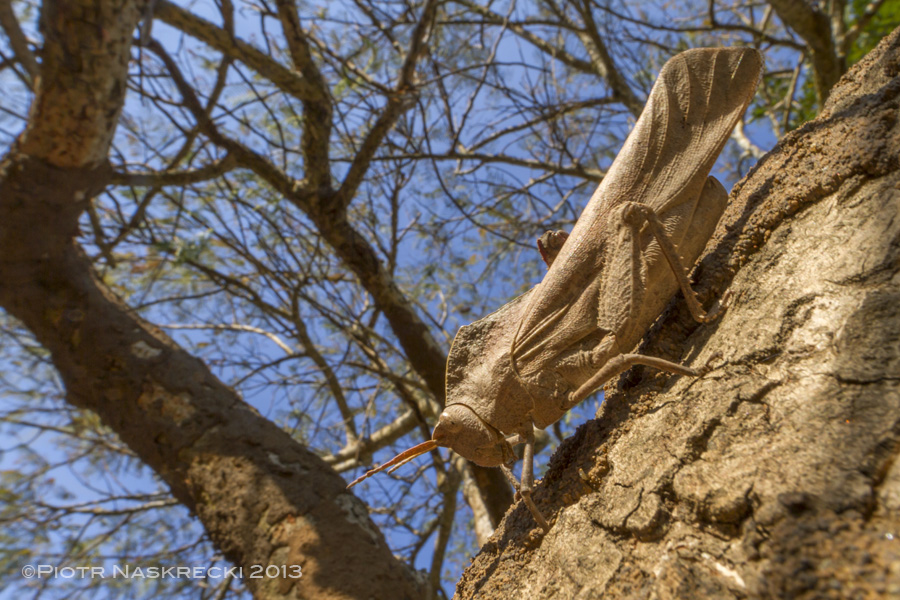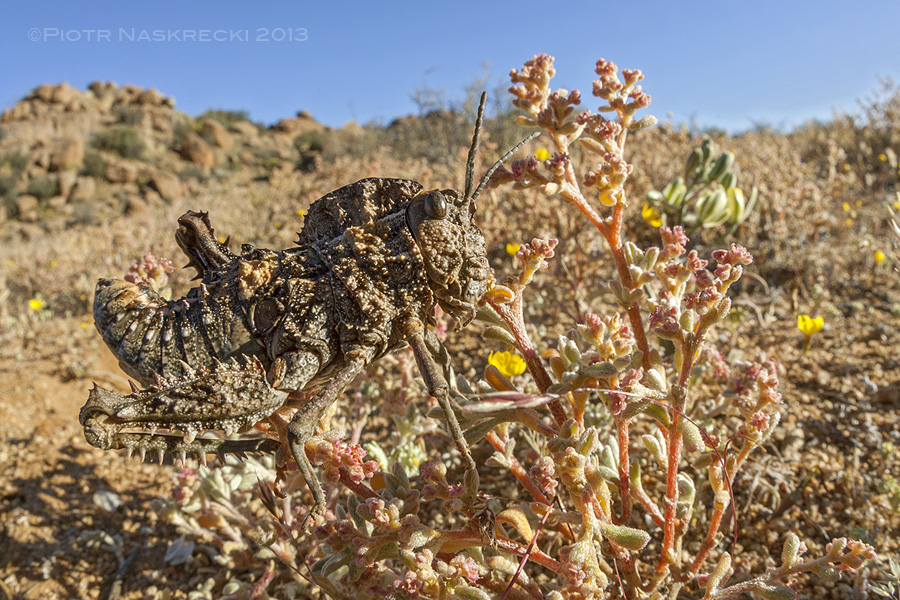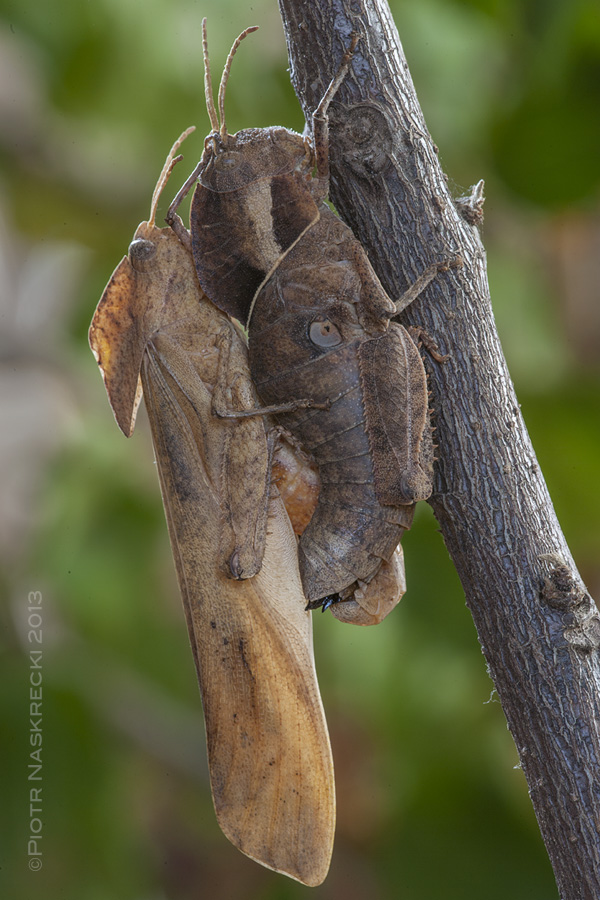
At first I didn’t know what woke me up. The night was silent and nothing but a faint warble of tree crickets could be heard outside my tent. For a few of minutes I just lay there, foggily trying to figure out what disturbed my sleep but soon started to drift off. Suddenly, there it was again – a sharp noise, like some heavy machinery, right next to my head. The noise made me sit up and reach for the headlamp – it could only be one thing, and I wanted it. I slunk out of the tent, careful not to disturb the animal that was causing the ruckus. And there he was, sitting on a low hanging branch, a pamphagid grasshopper.

African members of the grasshopper family Pamphagidae, known in South Africa as the “rain locusts”, are a strange lot, even by the standards of a place that gave us heelwalkers and goliath beetles. For one, they are huge. The male Lamarckiana that woke me up in the middle of the Mozambican savanna during a recent survey of Gorongosa National Park was about 10 cm long, with a massive build of an animal whose only defense is to make itself impossible to swallow. He had long, leathery wings and his thick hind legs were covered with sharp spines. But aside from his size the most unusual thing about this grasshopper was the way he was calling. Firstly, he was doing it at one in the morning, which was way past bedtime for nearly all self-respecting grasshoppers. He was also doing it all wrong. Rather than rubbing his hind femur gently against the front wing, which is the typical grasshopper way of producing sound, he was kicking the wings violently with his hind tibia, aiming for a concave spot covered with dense, parallel ridges. The resulting sound was incredibly loud and mechanical, very different from the whispery stridulation of most grasshoppers. A friend of mine claims that he almost had a heart attack when a pamphagid grasshopper that I kept in our shared office suddenly started singing in the middle of the night – he was convinced that a spaceship was about to land outside the window. (Click here to listen to a recording of Hoplolopha sp. I made in South Africa – crank up the volume so that you can hear jackals calling once the grasshopper stops.)

African pamphagids, especially those belonging to the subfamily Porthetinae, exhibit a remarkable sexual dimorphism. In most species the males are fully winged and usually can fly quite well; often they are attracted to lights at night, causing consternation among people not used to the idea of a grasshopper the size of a small bird. Females of all Porthetinae are completely wingless and even larger than the males. Their body is also more heavily sclerotized and often covered with hard ridges and spines – a predator must be really desperate to try tackling one of these walking tanks. Surprisingly, despite the lack of wings, females are also capable of producing sound by rubbing their legs against the rough surface of the abdomen. The sound, which is much softer than that of the male, is used to startle potential predators; in some species immature individuals are also capable of such defensive stridulation.



Very cool blog. I read it with interest after I found one of these grasshoppers here near Grahamstown. I took some photos of it but have a very cool video which I will post on my Youtube channel of it walking in jerky movements, trying to look like a brown leaf blowing in the breeze. The one I got was a female.
Interesting and useful. I used this article to ID a hopper on iSpot:
http://www.ispot.org.za/node/165775 . Thanks!
Reblogged this on Mark Solock Blog.
Teeeeeerific
D
I have been following your blog since the beginning, although I don”t remember how I found it. You seriously have the coolest job ever. Thanks for sharing this very cool audio recording, I loved it. I can’t imagine how it’s possible to sleep with all those night noises.